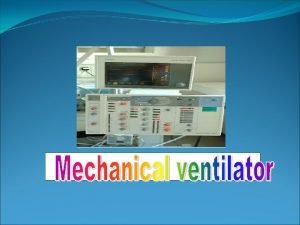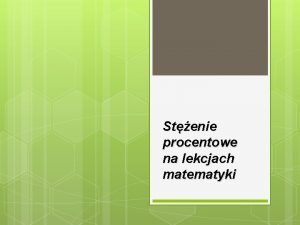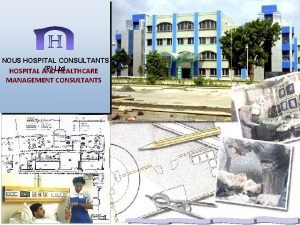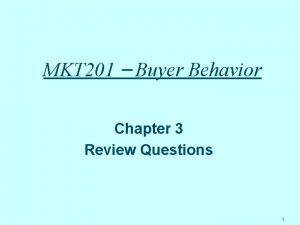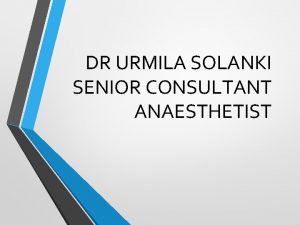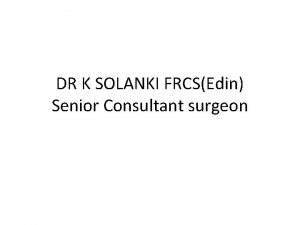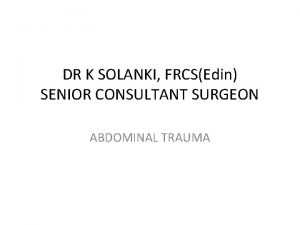DR URMILA SOLANKI SENIOR CONSULTANT ANAESTHETIST VENTILATION I







- Slides: 7

DR URMILA SOLANKI SENIOR CONSULTANT ANAESTHETIST

VENTILATION • I. Mechanical ventilation • A. Negative Pressure Ventilation: • Works by ‘sucking out the chest wall and is used in chronic hypoventilation (polio, kyphoscoliosis or muscle disease). Expiraton is passive. • The ‘iron lung or tank ventilator is the most well known; alternatives include thoracic cuirasses with a semi-rigid cage aroun the chest only and other devices which may be custom built. • Does not require tracheal intubation. • In acute cases PPV with intubation.

• • • II. IPPV: Indications: Pneumonia Exacerbation of COPD Massive atelectasis Respiratory muscle weakness (Myaesthenia gravis, Acute infective polyneuritis) Head injury Cerebral hypoxia (e. g. post cardiac arrest) Intracranial bleed Raised intracranial pressure Major trauma or burns

• Ventilation is via either an endotracheal tube or tracheostomy. • If ventilation is anticipated to be needed for > a week, tracheostomy. • Two basic types of ventilators: • A. Pressure cycled – delivers gas into the lungs until a prescribed pressure is reached, when inspiratory flow stops and, after a short pause, expiration occurs by passive recoil. • This has advantage of reducing the peak airway pressures without impairing cardiac performance in situations such as adult resp. distress syndrome. • If airway pressure s increase or compliance decreases, the tidal volume will fall (monitor closely to avoid hypoventilation)

• B. Volume cycled ventilators – deliver a preset tidal volume into the lungs over a predetermined inspiratory time (usually 30% of the breathing cycle), hold the breath in the lungs (for 10% of the breathing cycle) and then allow passive expiration as the lungs recoil.

• III. Positive Pressure Ventilation: • A. Continuous mandatory ventilation • Preset cycle to deliver a given number of breaths per minute of a set volume. • Minute volume = tidal volume x frequency • I: E ratio normally set to 1: 2, but may be altered, e. g. in acute asthma, where air trapping is a problem, a longer expiratory time is needed; in ARDS, where the lung compliance is low, a longer inspiratory time is needed. • The pt. should be fully sedated. • Prolonged use of this may result in atrophy of the respiratory muscles. • Ventilation may either be terminated abruptly or gradually.

• IV. Synchronized intermittent mandatory ventilation: • Allows the pt. to breath spontaneously and be effectively ventilated and allows gradual transfer of the work of breathing on to the pt.


